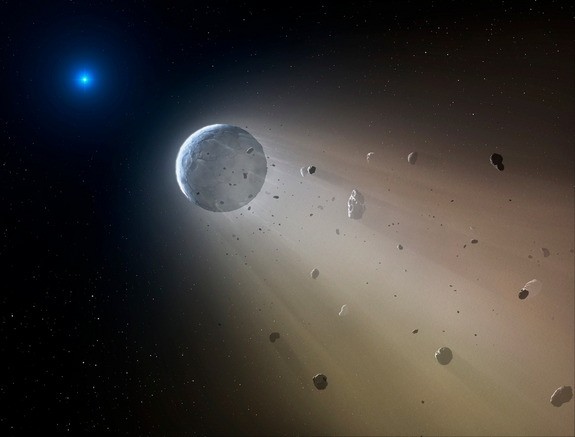A star the size of Texas has been observed by astronomers through NASA's Kepler space telescope to be destroying and disintegrating an orbiting planet little by little, something that foretells what could happen with our own planet millions of years from now.
The death star is about the size of dwarf planet Ceres, and scientists surmise it could fully consume itself within a million years from today. Astronomers were able to watch the body crumble and witnessed the potential death of a solar system.
Using the Kepler space telescope together with ground telescopes, scientists marked a planetary body going round a tiny and faint white dwarf which happens to be the death star or planet destroyer in motion.
"This is something no human has seen before," said Andrew Vanderburg, a graduate student at the Harvard-Smithsonian Center for Astrophysics and lead author of the new study. "We're watching a solar system get destroyed.
"What we're seeing are fragments of a disintegrating planet that is being vaporized by [the white dwarf's] starlight and is losing mass," Vanderburg told Space.com. "The vapor is getting lost into orbit, and that condenses into dust which then blocks the starlight."
The ability of the scientists to see dust from the crumbling body change the light emanating from the white dwarf gives astronomers a complete sense of how stars and planets orbit themselves.
Researchers reveal that an aging star swells outward into a red giant and swallows any objects orbiting too close to it; and the sun in our own solar system might also grow to swallow Mercury, Venus, and maybe Earth in the next 5 billion years as our own sun age.
The sight of a planetary body dying and disintegrating around the white destroying dwarf will present scientists with the opportunity to see the various elements inside the body as it crumbles, and studying its atmosphere will be much easier than when it is in orbit around a larger star.
"Finally, white dwarfs get a little bit of fuss around them," said Francesca Faedi, an astronomer at the University of Warwick in England. "They deserve that. We cannot have a nice picture of exoplanets, we cannot understand exoplanets, unless we understand how they got formed, how they evolve dynamically and how they die."



























